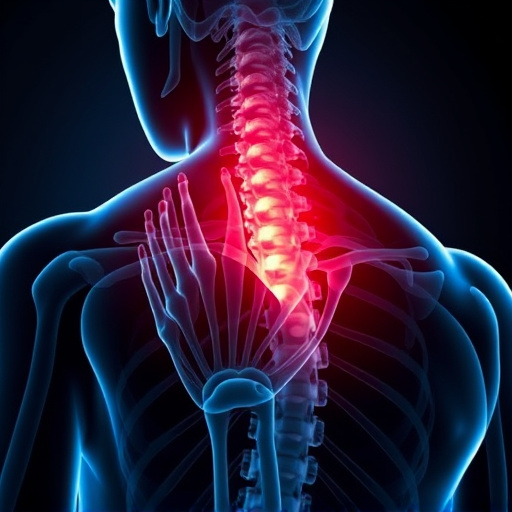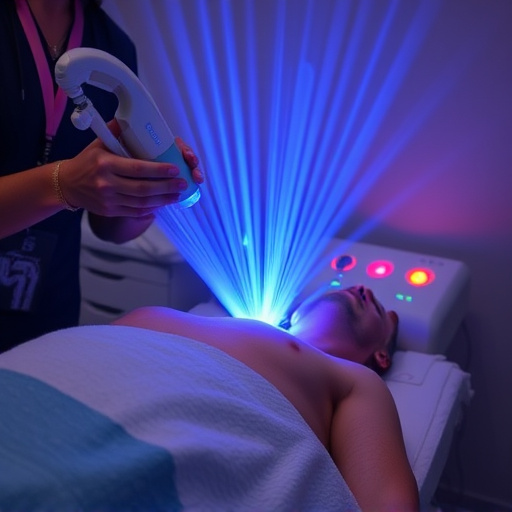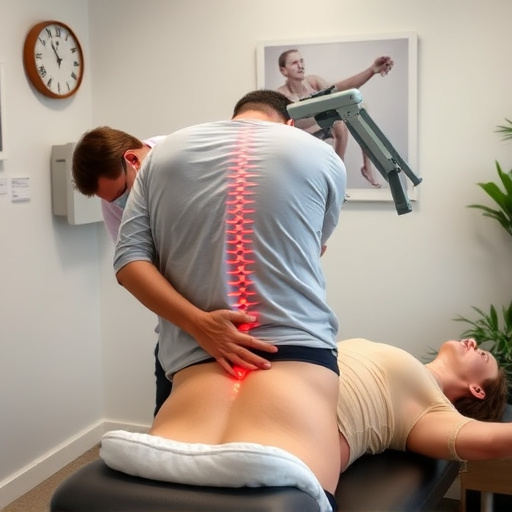Acoustic Wave Therapy (AWT) is a non-invasive, sound-based treatment gaining popularity for chronic pain management. Effective for auto accident recovery, sports injuries, and conditions like sciatica, AWT promotes tissue regeneration, reduces inflammation, and blocks pain signals without surgery or medication. While generally well-tolerated, individual results vary; skilled healthcare professionals are crucial for diagnosis and tailored treatment plans.
Acoustic Wave Therapy (AWT) offers a groundbreaking, non-invasive approach to chronic pain management. This innovative treatment utilizes low-intensity sound waves to modulate pain signals, targeting deep tissues without breaking skin or causing discomfort. Unlike traditional methods, AWT promotes natural healing and is safe for diverse patient populations. By understanding its mechanisms and exploring its benefits and considerations, we can recognize AWT as a promising solution for chronic pain relief.
- Understanding Acoustic Wave Therapy: Unlocking Non-Invasive Pain Management
- How Acoustic Wave Therapy Works for Chronic Pain Relief
- Exploring Benefits and Considerations for Acoustic Wave Therapy in Chronic Pain Treatment
Understanding Acoustic Wave Therapy: Unlocking Non-Invasive Pain Management

Acoustic Wave Therapy (AWT) is a groundbreaking non-invasive treatment that has gained recognition for its effectiveness in managing chronic pain. Unlike traditional invasive procedures, AWT leverages sound waves to stimulate and heal tissues, making it an attractive option for individuals seeking relief from persistent discomfort. This innovative therapy offers a unique approach to pain management, especially for those who may be hesitant or unsuitable candidates for surgical interventions.
AWT has proven successful in various scenarios, including auto accident recovery and rehabilitation services. By focusing on the body’s natural healing mechanisms, it promotes tissue regeneration and reduces inflammation, providing an alternative path to alleviate chronic pain conditions. The non-invasive nature of this therapy makes it an appealing choice for patients, ensuring a more comfortable and convenient journey towards pain relief without the risks associated with surgery.
How Acoustic Wave Therapy Works for Chronic Pain Relief

Acoustic Wave Therapy (AWT) offers a non-invasive and innovative approach to chronic pain relief, providing an alternative treatment option for those seeking long-lasting solutions. This advanced therapy utilizes sound waves at specific frequencies to stimulate healing and modulate pain signals in the body. The process involves transmitting acoustic energy through the skin, which can penetrate deep into tissues, reaching areas affected by chronic pain.
AWT is particularly effective in addressing various types of chronic pain conditions, including those resulting from sports injuries, auto accidents, or spinal adjustments. By targeting these problematic areas, AWT promotes natural healing processes and reduces inflammation. The therapy’s ability to modulate pain perception makes it a valuable tool for managing persistent discomfort, offering patients an alternative to traditional medications or invasive procedures.
Exploring Benefits and Considerations for Acoustic Wave Therapy in Chronic Pain Treatment

Acoustic Wave Therapy (AWT) is a non-invasive treatment gaining traction as a promising solution for chronic pain management. This innovative approach leverages sound waves to target specific areas, offering potential relief for conditions like sciatica and various soft tissue injuries. The benefits of AWT are numerous; it can reduce inflammation, promote tissue repair, and block pain signals without the need for medications or surgery, making it an attractive alternative for those seeking complementary care options.
However, when considering AWT for chronic pain treatment, several factors come into play. The effectiveness of this therapy depends on various elements, including the specific condition being treated, the severity of pain, and individual patient responses. Physical therapists or healthcare professionals skilled in AWT administration are essential to ensure accurate diagnosis and appropriate treatment planning. Additionally, while AWT is generally well-tolerated, side effects may include temporary redness or mild discomfort at the treatment site, necessitating open communication between patients and caregivers for optimal outcomes.
Acoustic Wave Therapy (AWT) presents a promising, non-invasive approach to managing chronic pain. By harnessing the power of sound waves, AWT offers a safe and effective alternative for those seeking relief from various painful conditions. While further research is needed to explore its full potential, existing studies suggest that AWT can significantly improve quality of life for patients with chronic pain. As we continue to navigate the benefits and considerations of this innovative treatment, it holds great promise as a game-changer in pain management.














